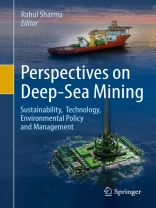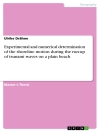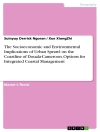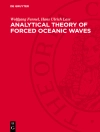This book is a sequel to ’Deep-Sea Mining: Resource Potential, Technical and Environmental Considerations’ (2017) and ‘Environmental Issues of Deep-Sea Mining: Impacts, Consequences and Policy Perspectives’ (2019), and aims to provide a comprehensive volume on different perspectives of deep-sea mining from specialists around the world. The work is timely, as deep-sea minerals continue to enthuse researchers involved in activities such as ascertaining their potential as alternative sources for critical metals for green energy and other industrial applications, as well as technology development for their sustainable exploration and exploitation, while addressing environmental concerns. With a steady increase in the number of contractors having exclusive rights over large tracts of seafloor in the ‘Area’, i.e. area beyond national jurisdictions, the International Seabed Authority, mandated with the responsibility of regulating such activities, is in the process of developing a code for exploitation of deep-sea minerals. These, coupled with growing interest among private entrepreneurs, investment companies and policy makers, underscore the need for updated information to be made available in one place on the subject of deep-sea mining. The book evaluates the potential and sustainability of mining for deep-sea minerals compared to other land-based deposits, the technologies needed for mining and processing of ores, the approach towards environmental monitoring and management, as well as the regulatory frameworks and legal challenges to manage deep-sea mining activities. The book is expected to serve as an important reference for all stakeholders including researchers, contractors, mining companies, regulators and NGOs involved in deep-sea mining.
表中的内容
Chapter1. Deep-sea mining — historical perspectives.- Chapter2. Approach towards deep-sea mining — current status and future requirements.- Chapter3. Estimates of metals contained in abyssal manganese nodules and ferromanganese crusts in the global ocean.- Chapter4. Geological Characterization of Ferromanganese Crust Deposits in the NW Pacific Seamounts for Prudent Deep-sea Mining.- Chapter5. Secondary Ion Mass Spectrometry Microanalysis of Platinum in Hydrogenetic Ferromanganese Crusts.- Chapter6. A precautionary approach to developing nodule collector technology.- Chapter7. Mining and Processing of Seafloor Massive Sulfides:Experiences and Challenges.- Chapter 8. Comparative advantages of the mineral processing of deep sea polymetallic nodules over terrestrial ores.- Chapter9. Exploring the use of renewable resources for processing of deep-sea minerals.- Chapter10. Reductive Ammonia Leaching Process for Metal Recovery from Manganese Nodules: Can there bea Zero Waste Approach?.- Chapter11. Natural variability versus anthropogenic impacts on deep-sea ecosystems of importance for deep-sea mining.- Chapter12. Comprehensive understanding of seafloor disturbance and environmental impact scenarios.- Chapter13. Adaptive Management as a tool for effective environmental management of deep-sea mining.- Chapter14. Integrated environmental management of the ecological impacts from seafloor massive sulfide mining — perspectives from the Kermadec Volcanic Arc, New Zealand.- Chapter15. Analysis of different models for improving the feasibility of deep-sea mining.- Chapter16. Conceptual 3D modelling and direct block scheduling of a massive seafloor sulfide occurrence.- Chapter17. Risk assessment in deep-seabed mining.- Chapter18. An evaluation of the payment regime for deep seabed polymetallic nodule mining in the Area.- Chapter19. Sharing Financial Benefits from Deep Seabed Mining: the case fora Seabed Sustainability Fund.- Chapter20. Achieving Effective Seabed Mining Regulation and Management: A Missing Link.- Chapter21. Operational aspects of implementing regulatory frameworks to manage deep-sea mining activities.- Chapter22. Traditional and socio-ecological dimensions of seabed resource management and applicable legal frameworks in the Pacific Island States- Chapter23. Safeguarding the interests of developing states within the context of deep-sea mining in the Area.
关于作者
Dr. Rahul Sharma retired as a Chief Scientist from the National Institute of Oceanography in Goa, India. He received his Ph D in Marine Science from Goa University in 1997. His research interests include development of underwater photography for deep-sea exploration, environmental impact assessment for deep-sea mining, and application of exploration data for deep-sea mining and environmental conservation. He has undertaken several assignments for international research organizations, academic institutions and the International Seabed Authority. He is the editor of the books ‘Deep-sea mning (2017)’ and ‘Environmental issues of deep-sea mining (2019) published by Springer.












